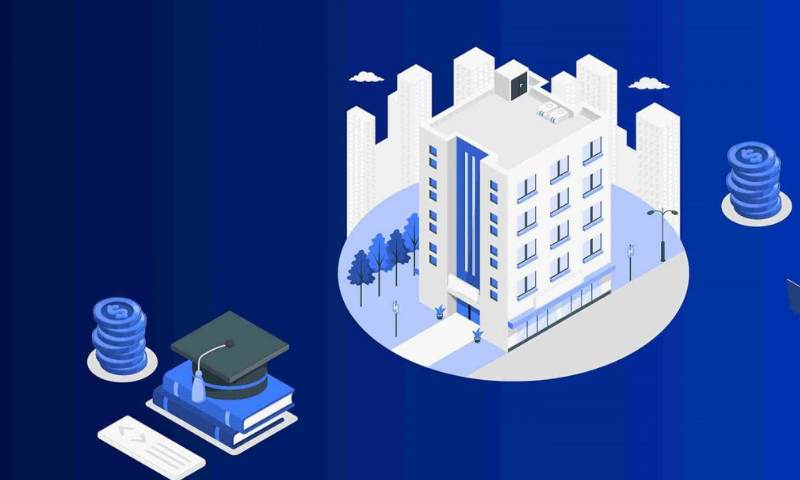Unlocking Blockchain Safety: Why User Education is Crucial
We all know blockchain is a game-changer. But did you ever stop to think that the importance of user education in blockchain security is just as game-changing? It’s the shield that guards the realms of digital coins. Without it, you’re just another easy target in a sea of savvy hackers. So, buckle up as we dive deep into why knowing your blockchain ABCs can save your digital bacon. Let’s break down the big myths and suit you up with some fail-safe armor against those crypto crooks.
The Foundation of Blockchain Security: Understanding the Basics
The Role of User Education in Strengthening Blockchain Infrastructures
We must know blockchain to keep it safe. User education tightens security. Everyone using the tech needs to learn about it. Teaching people about blockchain keeps everyone’s money secure. It’s like learning the rules of the road before driving a car.
Understanding blockchain risks is key. If users don’t know the risks, they can’t avoid them. A simple mistake can lead to lost crypto. That’s why we stress crypto security awareness. We teach users how to spot and stop bad actors.
For strong security, we must all play a part. When users know how to act, the whole system gets stronger. Blockchain is a team sport, and the team must be smart. When we all know the best moves, the game gets better for everyone.
Common Misconceptions About Blockchain and Their Repercussions on Security
Many think blockchain means total safety. This isn’t true. Scammers try to trick users every day. People often think their crypto can’t be taken. But poor choices can open the door to theft.
Some believe that once it’s on the blockchain, it’s set in stone. But even rock can crack. Smart contract bugs can cause big problems. Even blockchain can have weak spots.
Users may not know how important private keys are. It’s like a key to a treasure chest. If someone else gets your key, your treasure might be gone. That is why it’s crucial to keep private keys secret.
Understanding blockchain is about grasping these truths. To secure your crypto, you have to know where it’s vulnerable. And with strong blockchain knowledge, you’ll know just how to protect it.
Education isn’t just a one-time event. It’s an ongoing journey. As blockchain grows, learning has to keep up. We have to be on our toes, always ready to learn more. And when we do, our crypto stays safer for it.
Beyond the Password: Advanced Practices for Personal Crypto Security
The Significance of Multi-Factor Authentication and Cold Storage
In blockchain, keeping coins safe is a big deal. “What is multi-factor authentication (MFA) and why is it important?” MFA is a security step that asks for two or more proofs of identity when logging in. It’s key for guarding online accounts, including crypto wallets. Picture MFA as a double-lock on your front door; it’s tougher for thieves to break in.
MFA often includes something you know (like a password), something you have (like a phone), and something you are (like a fingerprint). Using MFA can save you from heartache if someone steals your password, they still can’t get in without the second check.
Now, let’s talk about cold storage. “What is cold storage for cryptocurrency?” Cold storage means keeping your crypto offline, away from hackers. Imagine it as a safe tucked far from anyone’s reach. It’s a USB drive or other device where you store your crypto. It doesn’t touch the internet, so it’s super safe.
Identifying and Mitigating Smart Contract Vulnerabilities
Smart contracts are like robot deals that live on the blockchain. They’re cool but can have bugs. “What are smart contract vulnerabilities?” This means weaknesses in the contract that can let bad guys in. If the code’s not perfect, someone could steal your crypto.
For example, a contract may let someone take crypto without the right conditions. To stay safe, only use contracts from trusted sources. Better yet, have an expert check the code if you can.
Learn about these risks and share what you know. Helping others understand is just as important as knowing it yourself. Remember, each user plays a role in blockchain safety. Be smart, use MFA, store crypto cold, and eye those smart contracts. Together, we can keep our blockchain journey secure.
Navigating the Threat Landscape: Recognizing and Preventing Crypto Scams
Strategies for Safe Crypto Transactions and Avoiding Phishing Attacks
We all want to keep our crypto safe. We hear about people losing their coins to bad guys. To stop this, we need to be smart when we trade and send crypto. Always check who is getting your digital money. Use strong passwords that mix letters, numbers, and signs. Don’t tell anyone your secret keys. These keys are like the key to a treasure that only you should hold.
When you get emails or messages, watch out for traps. Bad people may try to trick you. They pretend to be a business you trust. They want you to give your crypto or private info. Do not click on odd links in emails or texts. Before you do anything, make sure the person asking is who they say they are.
User Vigilance and Reporting Protocols for Blockchain Fraud
If you see something fishy in the blockchain world, say something. We all play a part in keeping it safe. If a scam happens to you or you see one, report it fast. Use the online forms to report the bad stuff you find. Keep the crypto world safe for everyone.
Talk to your friends about scams you know. Share your knowledge on how to spot a scam. The more we know, the harder it is for scammers to win. Remember, we can keep our blockchain safe when we all help out.
Learning about blockchain risks is like learning to cross the road. We check both ways. We make sure it’s safe. That’s what we must do with our digital wallets too. When trading crypto, check everything twice. Make sure you’re sending to the right person. And always keep your computer or phone secure.
In the grand world of blockchain, we’re all students and guardians. We learn every day how to keep our digital coins safe. The more we know about crypto security awareness, the better we protect ourselves. Let’s stay curious. Let’s find out all we can about safe crypto transactions and smart contract security.
Remember, your role in blockchain safety can’t be overstated. You can make sure your crypto journey is secure and free of trouble. While I can’t promise that the path will always be smooth, with the right knowledge, you can navigate the twists and turns like a pro. The key to unlocking this security? It’s all in your hands – through learning, staying alert, and sharing your insights. Together, we turn the blockchain into a fortress, one block at a time.
Empowering Users Through Cybersecurity Literacy in Blockchain Ecosystems
Comprehensive Digital Wallet Security and the Management of Private Keys
When you dive into the blockchain world, think of your digital wallet as your home. Just like your home, it needs strong locks. Here, the locks are your private keys. Never share them, like you wouldn’t share your home keys with a stranger. Private keys are long codes that let you into your wallet. It’s vital to keep these safe and secret.
Many don’t know that if you lose your keys, you lose your crypto. Period. That’s why writing them down and storing them somewhere only you know is as crucial as the keys themselves. Back them up, too. This way, you’re not stuck if it gets lost.
But it’s not just losing keys that can hurt. Thieves are always out there, looking for easy ways to steal them. That’s where securing digital wallets comes in. Always check links and emails. Scammers often fake these to trick you into giving up your keys.
Teach yourself all about avoiding these traps. Know what real crypto emails look like. If links look weird, they could be fake. When in doubt, don’t click. Keep your eye out for phishing attacks in blockchain. These scams pretend to be legit to steal your keys and your coins.
Blockchain Education as a Key Tool in Fostering Secure Online Environments
Education is power, especially in the blockchain game. By educating users on crypto security, we’re all becoming smart players. Learning about blockchain knowledge makes us wise. It’s about understanding blockchain risks and staying a step ahead. Secure blockchain practices start with knowing what you’re doing.
It’s not just about your wallet. Blockchain safety training shows you how to look at the full picture. It answers questions like, “How do I make a safe crypto transaction?” and “What’s smart contract security?” The importance of blockchain literacy can’t be overstressed. It keeps your assets in your hands.
The more you learn, the safer you are. Crypto security awareness is all about the user responsibility in crypto. You hold the keys, literally and figuratively. Personal security in blockchain is trusting yourself to manage your digital riches. Self-custody of crypto assets is not just smart; it’s necessary.
Don’t forget about the human side of things. We all need to understand the importance of private keys and personal cybersecurity in financial technology. Your actions can either make or break your crypto experience. Implementing multifactor authentication blockchain procedures is like adding an alarm to your home.
In short, it all starts with you. Whether it’s securing digital wallets or dodging tricky scams, your know-how is the best tool. So build up your blockchain education. Become a hero in your own crypto journey. Remember, in the blockchain world, knowledge isn’t just power—it’s your best defense.
We’ve walked through the ins and outs of blockchain security, starting with its foundation. We learned that knowing the basics can greatly boost how safe our crypto is. I talked about the big mix-ups people have about blockchain and why it’s crucial to set them straight for everyone’s safety.
Then, we moved past simple passwords to get into serious crypto safety moves like using more steps to get into your accounts and keeping your crypto offline. We also talked about how to spot weak spots in smart contracts to keep your coins safe.
After that, we looked at the scams out there. I showed you how to do crypto deals safely and keep clear of phishing. Always stay alert and know how to tell someone if you see a scam.
Lastly, cybersecurity smarts are key. I covered how to take good care of your digital wallet and private keys. Education is your best tool to make sure we all use blockchain safely.
Remember, your security is in your hands. Keep learning and stay smart in the crypto world!
Q&A :
Why is user education crucial in blockchain security?
Educating users about blockchain security is fundamental because it empowers them to protect their own digital assets effectively. Without proper knowledge, users may unintentionally compromise their wallets or fall victim to scams. Awareness of security best practices and understanding the technology can significantly reduce the risks of breaches and asset loss.
How does user education improve overall blockchain ecosystem security?
User education improves blockchain ecosystem security by creating a more knowledgeable community that can identify and avoid potential threats. When users understand the importance of security measures such as two-factor authentication, secure key storage, and recognizing phishing attempts, they contribute to a safer environment for all participants in the ecosystem.
What are some effective ways to educate users about blockchain security?
Effective methods to educate users about blockchain security include:
- Interactive workshops and webinars that engage users and address their questions in real-time.
- Comprehensive guides and tutorials on secure practices for managing private keys and transaction processes.
- Development of user-friendly security tools and resources, such as hardware wallets with clear instructions.
- Online courses and certification programs that cover various aspects of blockchain technology and its security challenges.
Can user education keep up with the evolving security threats in blockchain?
While user education is a critical component in the defense against security threats, it must be continuously updated to keep pace with the rapidly evolving nature of blockchain technology and the sophistication of potential attacks. Ongoing education efforts and resources that reflect the latest security developments are essential.
What are the risks of neglecting user education in blockchain security?
Neglecting user education in blockchain security can lead to increased incidents of fraud, theft, and loss of funds due to users not being equipped to safeguard their digital assets. Lack of awareness can also hamper the adoption of blockchain technology, as potential users might be deterred by the perceived security risks associated with insufficient knowledge.


